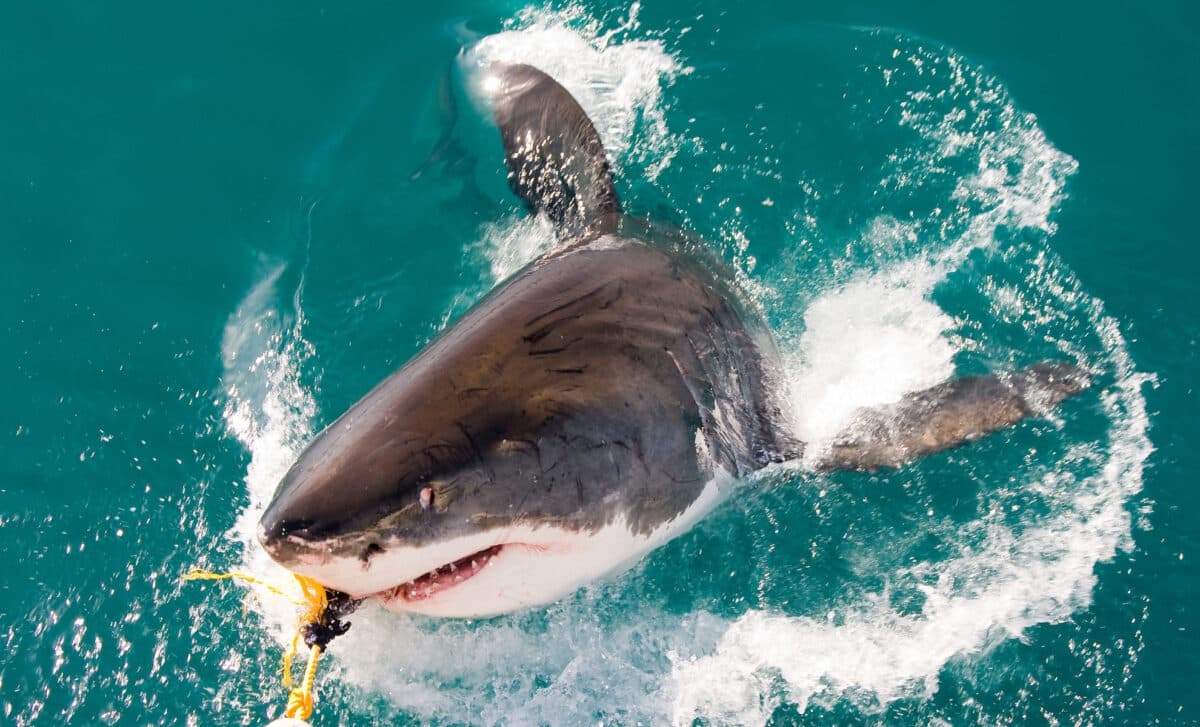A massive great white shark named Contender is currently being closely tracked by scientists along the East Coast of the United States. Since January, this 750-kilogram shark, the largest male ever tagged in the North Atlantic, has been migrating along the coast, raising both interest and caution among experts and local authorities.
This shark, tagged with a satellite device, is part of a long-term study by OCEARCH scientists aimed at better understanding the movements of adult great white sharks. As Contender makes its way along the coast, it has raised concerns over the safety of beachgoers. Local authorities have issued warnings in areas where the shark has been detected, urging caution and attention to safety signs.
Astrophysicist Tears Down Musk’s Mars Plan: Why Earth is Still Our Only Hope
The Largest Male Shark Ever Tagged in the North Atlantic
Contender’s size and weight make it a standout among tracked great white sharks. Measuring 4.2 meters in length and weighing 750 kilograms, it holds the record as the largest male shark ever tagged in the North Atlantic.
This massive shark was captured and tagged by OCEARCH researchers in January, off the coast of Jacksonville. Since its tagging, Contender has traveled over 3,000 kilometers, moving toward known summer feeding grounds such as Cape Cod in Massachusetts and the waters near Nova Scotia, Canada. These movements offer scientists valuable insights into the migratory patterns of great white sharks, which remain largely unknown, especially regarding their adult years.
The Unexpected Return Near Popular Beaches
In early June, Contender made a surprising reappearance near the coast of North Carolina, specifically off Pamlico Sound, a region known for its proximity to popular beaches. Although the shark has not shown any aggressive behavior, its location close to human activity raised alarms among scientists.
According to John Tyminski, a data specialist at OCEARCH, the risk of the shark approaching the shore is minimal but still a real possibility. The primary concern for experts is the shark’s feeding habits. As it follows its prey, such as pelagic fish and seals, there is always a chance that it could approach the shore if its food does.
The Ongoing Surveillance of the Shark
Scientists are continuing to monitor Contender’s movements closely, using a satellite tag to track its location when it surfaces. The tag provides intermittent data, making it difficult to predict the shark’s exact path.
Researchers are keen to observe the shark’s full migration during this summer season, as it offers a rare opportunity to learn more about the behavior of adult great white sharks. Experts have urged swimmers and surfers to stay vigilant, avoid swimming alone or at dusk, and follow local safety guidelines while enjoying the beaches.








